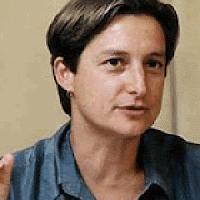.jpg) |
| Stoppard |
The
trouble with concentrating on the specific is that it leads to delusions of
grandeur.
There
is a scene in the film Shakespeare In Love (1998) (written by Marc Norman and
Tom Stoppard) which has the following dialogue:
(The
company of actors are about to put on Romeo and Juliet. A young girl is
questioning one of the actors)
Girl:
So what's this play about then?
Man
playing nurse: Well, there's this nurse...
This same attitude applies
to most everything with which we are individually concerned. It is that thing
with which we currently identify. Any scholar’s subject is the centre of his or
her world. It is from that particular perspective an individual tends to
develop theories concerning the world and everything in it. So it is with
performance writing. When I consider the
scope of performance writing in relation to the matter of identity, any form of
textual display signifying identity will fall within that compass. Indeed any
display signifying identity will do and every signifier becomes a form of text.
That ‘text’ can be written in any
number of languages, some of which are more universal than others. This notion
is of particular importance when considering the question of identity.
Accepting that writing is performative is part of that notion. ‘Texts’ do
things.
 |
| Butler |
To give an example of where
I am going with this, I turn to Judith Butler. As to the question of gender,
she argues that gender is performative, “...that is, a sense of gender identity
for an individual or group develops from actions such as wearing certain
clothes (skirts and dresses for women, ties and jackets for men), engaging in
certain rituals (such as marriage), taking certain jobs (fewer women on
construction sites) and employing certain mannerisms; there is no natural,
true, or innate essence of gender, or for that matter any other identity.” For
Butler identity is “performatively constituted by the very ‘expressions’ that
are said to be it results”.
 |
| Derrida |
The clothes a person wears
are clues to their particular choice of identity. We can ‘read’ from the
colours, the materials, the cut and style of their clothing not only what
gender they purport to be, but many other aspects of their particular
personality. Each item of clothing on display is a textual display. It is a
performing text. Dressing is a means of writing identity just as much as
billboards, numbers on houses, car registration numbers and any other method of
textual display. As Jacques Derrida
proposes “there is nothing outside the text”.
So when you next hear an
actor say “Well there’s this nurse…” you can identity with Romeo or Juliet, or
whatever you happen to be wearing at the time.






